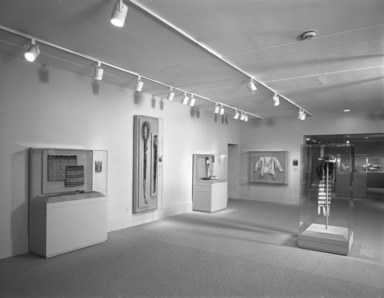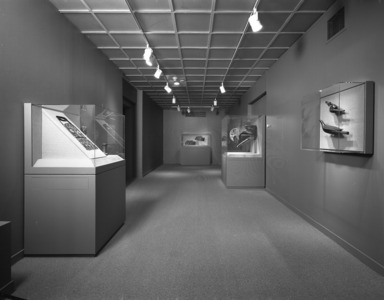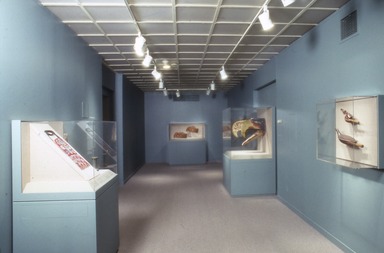

Objects of Myth and Memory, October 4, 1991 through December 30, 1991 (Image: AON_E1991i001.jpg Brooklyn Museum photograph, 1991)
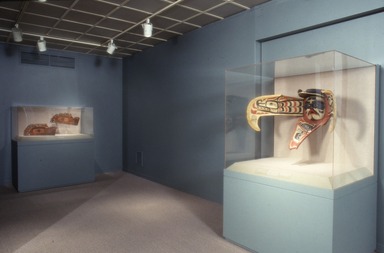
Objects of Myth and Memory, October 4, 1991 through December 30, 1991 (Image: AON_E1991i002.jpg Brooklyn Museum photograph, 1991)

Objects of Myth and Memory, October 4, 1991 through December 30, 1991 (Image: AON_E1991i003.jpg Brooklyn Museum photograph, 1991)
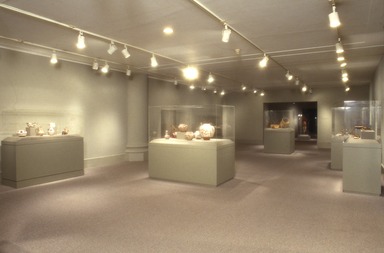
Objects of Myth and Memory, October 4, 1991 through December 30, 1991 (Image: AON_E1991i004.jpg Brooklyn Museum photograph, 1991)

Objects of Myth and Memory, October 4, 1991 through December 30, 1991 (Image: AON_E1991i005.jpg Brooklyn Museum photograph, 1991)
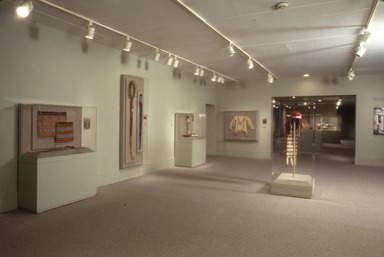
Objects of Myth and Memory, October 4, 1991 through December 30, 1991 (Image: AON_E1991i006.jpg Brooklyn Museum photograph, 1991)
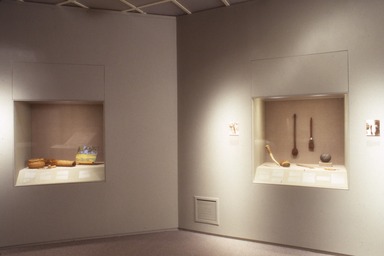
Objects of Myth and Memory, October 4, 1991 through December 30, 1991 (Image: AON_E1991i007.jpg Brooklyn Museum photograph, 1991)
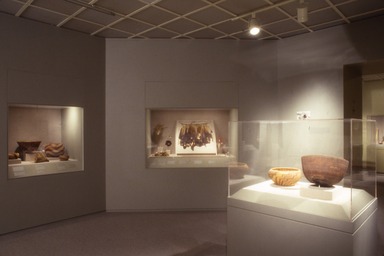
Objects of Myth and Memory, October 4, 1991 through December 30, 1991 (Image: AON_E1991i008.jpg Brooklyn Museum photograph, 1991)
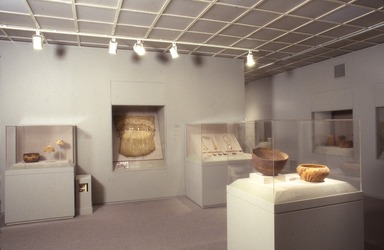
Objects of Myth and Memory, October 4, 1991 through December 30, 1991 (Image: AON_E1991i009.jpg Brooklyn Museum photograph, 1991)

Objects of Myth and Memory, October 4, 1991 through December 30, 1991 (Image: AON_E1991i010.jpg Brooklyn Museum photograph, 1991)
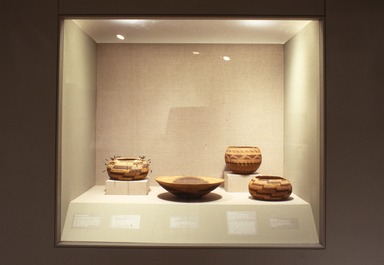
Objects of Myth and Memory, October 4, 1991 through December 30, 1991 (Image: AON_E1991i011.jpg Brooklyn Museum photograph, 1991)

Objects of Myth and Memory, October 4, 1991 through December 30, 1991 (Image: AON_E1991i012.jpg Brooklyn Museum photograph, 1991)

Objects of Myth and Memory, October 4, 1991 through December 30, 1991 (Image: AON_E1991i013.jpg Brooklyn Museum photograph, 1991)
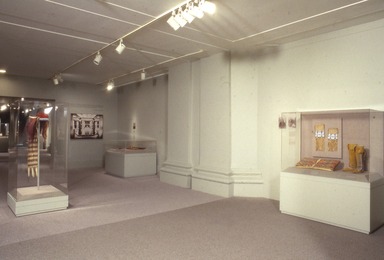
Objects of Myth and Memory, October 4, 1991 through December 30, 1991 (Image: AON_E1991i014.jpg Brooklyn Museum photograph, 1991)
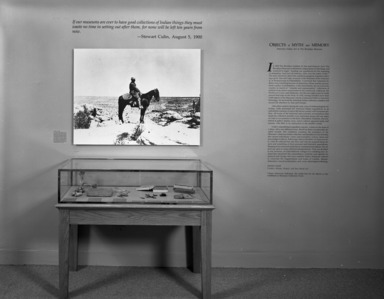
Objects of Myth and Memory, October 4, 1991 through December 30, 1991 (Image: PHO_E1991i015.jpg Brooklyn Museum photograph, 1991)
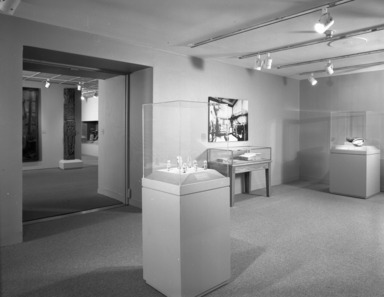
Objects of Myth and Memory, October 4, 1991 through December 30, 1991 (Image: PHO_E1991i016.jpg Brooklyn Museum photograph, 1991)
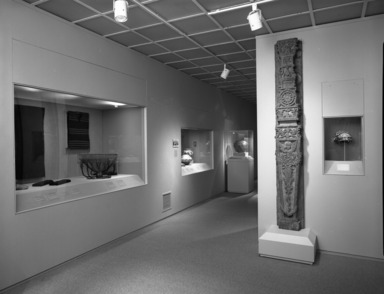
Objects of Myth and Memory, October 4, 1991 through December 30, 1991 (Image: PHO_E1991i017.jpg Brooklyn Museum photograph, 1991)

Objects of Myth and Memory, October 4, 1991 through December 30, 1991 (Image: PHO_E1991i018.jpg Brooklyn Museum photograph, 1991)

Objects of Myth and Memory, October 4, 1991 through December 30, 1991 (Image: PHO_E1991i019.jpg Brooklyn Museum photograph, 1991)

Objects of Myth and Memory, October 4, 1991 through December 30, 1991 (Image: PHO_E1991i020.jpg Brooklyn Museum photograph, 1991)
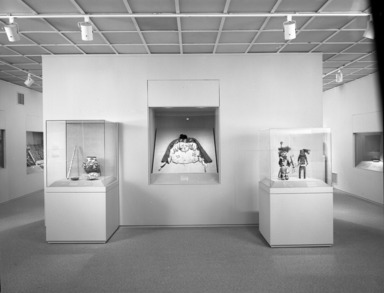
Objects of Myth and Memory, October 4, 1991 through December 30, 1991 (Image: PHO_E1991i021.jpg Brooklyn Museum photograph, 1991)
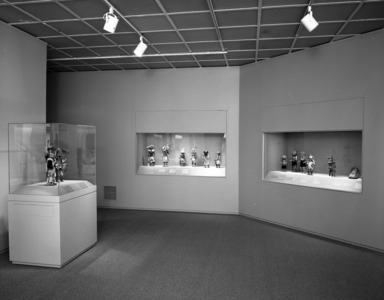
Objects of Myth and Memory, October 4, 1991 through December 30, 1991 (Image: PHO_E1991i022.jpg Brooklyn Museum photograph, 1991)
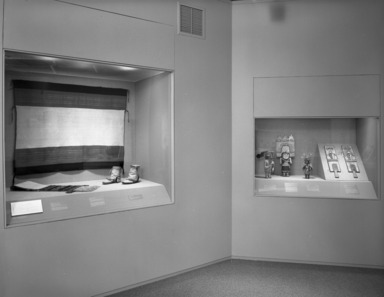
Objects of Myth and Memory, October 4, 1991 through December 30, 1991 (Image: PHO_E1991i023.jpg Brooklyn Museum photograph, 1991)
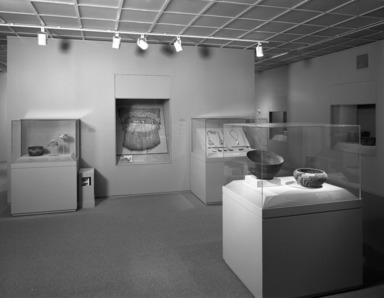
Objects of Myth and Memory, October 4, 1991 through December 30, 1991 (Image: PHO_E1991i024.jpg Brooklyn Museum photograph, 1991)

Objects of Myth and Memory, October 4, 1991 through December 30, 1991 (Image: PHO_E1991i025.jpg Brooklyn Museum photograph, 1991)

Objects of Myth and Memory, October 4, 1991 through December 30, 1991 (Image: PHO_E1991i026.jpg Brooklyn Museum photograph, 1991)
Objects of Myth and Memory
-
September 1, 1991
For the first time in the Museum’s recent history, material from the collections of the Library and Archives of The Brooklyn Museum will be displayed in conjunction with a major exhibition, Objects of Myth and Memory: American Indian Art at The Brooklyn Museum, on view October 4-December 29, 1991. The exhibition, which has been organized as a history of collecting, consists of more than 250 objects from some 9,000 collected in the first decade of the century by curator Stewart Culin.
During his tenure as the Museum’s first ethnologist (1903-1929), Stewart Culin also amassed a large and varied personal research collection which the Museum acquired after his death. The Stewart Culin Libary and Archives contain some 7,000 books and pamphlets, 28 expedition reports, 810 documentary photographs, and approximately 1,000 sketches, oils, and watercolors, as well as numerous correspondence and research files, manuscripts, and clippings.
Through this important and unusual research collection emerges a detailed, firsthand account of the individuals and events that shaped the art collection that Stewart Culin acquired for The Brooklyn Museum which includes not only works by Native Americans, but objects from Asia, Africa, and Eastern Europe as well.
Selections from Culin’s Library and Archives relating to Native American art and culture will be on view on the second floor at the entrance to the Museum Library as well as at the entrance to Objects of Myth and Memory in the Robert E. Blum Gallery on the first floor. Stewart Culin’s progress in the field may be tracked through his vivid narratives in the expedition reports and his acquisition and documentation procedures in chapbooks, catalogue cards, and labels. Photographs, sketches, manuscript materials, and books collected by Culin will also be on display. Among them are documentary photographs by Ben Wittick, a sketch of a Zuni game by pioneer ethnologist Frank Hamilton Cushing, and a letter from trader John Hubbell concerning the purchase of a Navajo shield on view in the main exhibition.
The exhibition of selections from the Culin Library and Archives has been funded in part by the National Endowment for the Humanities, a federal agency.
The Museum Library and Archives will reopen to the public by appointment starting October 2, after closing for several months because of severe budget cuts to the Museum by the City of New York.
Brooklyn Museum Archives. Records of the Department of Public Information. Press releases, 1989 - 1994. 07-12/1991, 256-257.
View Original -
August 1, 1991
In conjunction with The Brooklyn Museum’s major traveling exhibition of Native American art, Objects of Myth and Memory: American Indian Art at The Brooklyn Museum, and its complementary exhibition, A Dialogue with Tradition: Three Native American Artist-Families, the Museum will offer a selection of programs for adults, families, and children. Included in the programs is the six-week series Native American Film and Video: A Walk in Two Worlds, which examines the wealth and diversity of film and video both by and about Native Americans; an important daylong symposium with internationally prominent guest speakers; an artist-in-residence program featuring the three artist-families from A Dialogue with Tradition; and a Native American storytelling series for all ages.
Saturday, September 7, 11 a.m.
STORIES FROM THE RED CEDAR CIRCLE
Education Division, 1st floor
Johnny Moses, also known as Whis Tem Men Nee (Walking Medicine Robe), is a youthful spiritual teacher and leader of the Red Cedar Circle. Through storytelling, song, dance, and ritual, he will offer an experience of the depth and richness of an original “New World” way of being. For all ages, with sign-language interpretation for the hearing impaired.
Sunday, October 6, 2 p.m., for adults
ARTIST-IN-RESIDENCE: SUSAN BILLY
Education Division, 1st floor
Ms. Billy, one of the country’s leading contemporary weavers, is among the group of Native American artists from New Mexico and California whose work is featured in the Museum’s exhibition A Dialogue with Tradtion: Three Native American Artist-Families. Specializing in the tradition of intricate Pomo basketry, she will demonstrate the materials and techniques of her art, discuss historical objects, and place her work in the continuum of Pomo tribal traditions.
Sunday, October 13, 2 p.m.
NATIVE AMERICAN FILM AND VIDEO: IDENTITY
Iris and B. Gerald Cantor Auditorium
This film and video program examines the Native American community’s struggle to find an identity while living in both Native American and American cultures. Guest speaker: Lloyd Oxendine (Lumbe), Curator of Contemporary Art, American Indian Community House Gallery.
Akuhtavahmaweeseeh: Red Dawn, 1987, Larry Cesspooch (Ute) of the Ute Indian Tribe Audio-Visual, 20 minutes, video.
Honored by the Moon, 1990, Mona Smith (Dakota), 15 minutes, video.
In Our Language, 1982, Edgar Heap of Birds (Cheyenne), 6 minutes, video.
Navajo Talking Picture, 1986, Arlene Bowmman (Navajo), 40 minutes, film.
Return of the Sacred Pole, 1990, Michael Farrell, 28 minutes, video.
Sunday, October 20, 2 p.m.
NATIVE AMERICAN FILM AND VIDEO: HOPI VIDEO ARTIST VICTOR MASAYESVA, JR., IN PROFILE
Iris and B. Gerald Cantor Auditorium
The unique experimental work of Hopi video artist Victor Masayesva, Jr., is featured in this program. Part poem, part essay, part documentary, his tapes express a distinctly Native American aesthetic. Guest speaker: Victor Masayesva, Jr.
Pot Starr, 1990, 6 minutes.
SISKYAVI--the place of Chasms, 1991, 28 minutes.
Hopiit, 1982, 15 minutes.
Ritual Clowns, 1988, 18 minutes.
Saturday, October 26, at 10 a.m.
SYMPOSIUM: “OBJECTS OF MYTH AND MEMORY: AMERICAN INDIAN ART AT THE BROOKLYN MUSEUM”
Iris and B. Gerald Cantor Auditorium
This important daylong symposium will examine intellectual and ethical questions concerning ethnological collecting and early museum representations of American Indians. Participants in the morning session will place Culin’s collecting philosophy in a comparative and historical context and, in the afternoon session, will offer multiple perspectives on questions of connoisseurship and interpretation. Internationally prominent scholars, curators, and art dealers will participate. Funding for the speakers’ travel to the Symposium was provided by the Samuel H. Kress Foundation. The cost of the Symposium is $20 for nonmembers and $10 for members, senior citizens, and students.
Sunday, October 27, 1 p.m.
NATIVE AMERICAN STORIES FOR THE FAMILY
Education Division, 1st floor
In conjunction with Family Members’ Day, storyteller Stephanie L. Betancourt will narrate, while her family enacts Native American stories. With sign-language interpretation for hearing-impaired visitors.
Sunday, October 27, 2 p.m.
NATIVE AMERICAN FILM AND VIDEO: FOR YOUNGER VIEWERS AND FAMILIES
Iris and B. Gerald Cantor Auditorium
This special program of works for young viewers and their families, developed in collaboration with Lloyd Oxendine and the Native American Heritage Committee, is offered on the Museum’s Family Members’ Day and features Native American storytelling, with special emphasis on the role of the bear in two Native American tribes.
Why the Bear Clan Know Medicine, 1990, Aysha Quinn and John Sturgeon, 11 minutes, video.
Tiwa Tales: Little Filth and the Tlachees, 1990, Chuck Banner, Maggi Banner (Hopi), and Joseph Leonard Concha (Tiwa), 17 minutes, video.
I Am Different from My Brother, 1981, Tony Charles, director; produced by the Native American Public Broadcasting Consortium, 20 minutes, video.
Bear Dance, 1988, James Ciletti, 13 minutes, video.
Saturday, November 2, 2 p.m., for adults
Sunday, November 3, 11 a.m., for families
ARTIST-IN-RESIDENCE: THE NAHOHAI FAMILY
Education Division, 1st floor
Randy, Rowena, Milford, and Josephine Nahohai are a family of artists nationally renowned their Zuni pottery. They are one of a group of Native American artist-families from New Mexico and California whose work is featured in the Museum’s exhibition A Dialogue with Tradtion: Three Native American Artist-Families. They will demonstrate the materials and techniques of their art, discuss historical objects, and place their work in the continuum of Zuni tribal traditions. Following the demonstration, adults and children can work together in a hands-on workshop. For reservations call (718) 638-5000, ext. 230.
Sunday, November 3, 2 p.m.
NATIVE AMERICAN FILM AND VIDEO: EXPERIMENTATION
Iris and B. Gerald Cantor Auditorium
These film and video works reflect the diversity of aesthetic styles and interests of Native American makers experimenting with form and technique. Guest speaker: Elizabeth Weatherford, Head, Film and Video Center, National Museum of the American Indian.
Intrepid Shadows, 1966, Al Clah (Navajo), 18 minutes, silent film.
That Which Is Between, 1989, Mona Smith (Dakota) and Nan Toskey, 8 minutes, video.
Sharp Rocks, 1988, Pierre Lobstein and Edgar Heap of Birds (Cheyenne), 6 minutes, video.
Surviving Columbus, 1990, George Burdeau (Blackfeet) and Larry Walsh, 30 minutes, video.
Sunday, November 10, 2 p.m.
NATIVE AMERICAN FILM AND VIDEO: NATIVE AMERICAN WOMEN SPEAK
Iris and B. Gerald Cantor Auditorium
The voices and visions of Native American women are highlighted in this program. Guest speaker: Kamala Cesar (Mohawk), Artistic Director, Lotus Fine Arts.
Ten Dollars of Nothing, 1989, Sara Diamond, 11 minutes, video.
Wind Grass Song: The Voice of Our Grandmothers, 1989, Jana Birchum and Tori Breitling, 20 minutes, film.
In the Heart of Big Mountain, 1988, Sandra Johnson Osawa (Makah), 28 minutes, video.
To Protect Mother Earth, 1989, Joel L. Freedman, 59 minutes, film.
Saturday, November 16, 3 p.m.
STORIES OF THE EARTH
Education Division, 1st floor
Donna Couteau from the Sac and Fox Nations and her husband, Joe Cross, of Kaddo/Potawatomi, will honor the earth through a combined storytelling-performance program, concentrating on stories from the Southwest. With sign-language interpretation for hearing-impaired visitors.
Sunday, November 17, 2 p.m.
NATIVE AMERICAN FILM AND VIDEO: POLITICAL ACTIVISM
Iris and B. Gerald Cantor Auditorium
Two issues have dominated the political struggles of Native Americans: land claims and freedom of religious expression, basic rights that they are still fighting for. Guest speaker: Tonya Gonnella Frichner (Onondaga), attorney and President, American Indian Law Alliance.
Our Sacred Land, 1984, Chris Spotted Eagle (Houma), 28 minutes, film.
The Spirit of Crazy Horse, 1990, James Locker, 58 minutes, video.
Leonard Peltier, 1989, Hart Perry, 4 minutes, video.
Saturday, December 7, 2 p.m. for children
Sunday, December 8, 2 p.m. for adults
ARTIST-IN-RESIDENCE: GEORGE AND ANNABELLE BLAKE
Education Division, 1st floor
The Blakes, who specialize in creating ceremonial objects, featherwork, basketry, and Yurok carving, are one of a group of Native American artist-families from New Mexico and California whose work is featured in the Museum’s exhibition A Dialogue with Tradtion: Three Native American Artist-Families. They will demonstrate the materials and techniques of their art, discuss historical objects, and place their work in the continuum of Yurok tribal traditions. Following the demonstration, children can participate in a hands-on workshop. For reservations call (718) 638-5000, ext. 230.
Brooklyn Museum Archives. Records of the Department of Public Information. Press releases, 1989 - 1994. 07-12/1991, 262-267.
View Original -
July 1, 1991
The Brooklyn Museum will present an exhibition of works created by contemporary Native American artists from the Southwest and California who have actively sustained traditional crafts within their communities. Entitled A Dialogue with Tradition: Three Native American Artist-Families, the exhibition offers a rare opportunity for East Coast audiences to see the work of important artists who are widely recognized within their regions. It will open on October 4 and remain on view through January 27, 1992.
A Dialogue with Tradition is designed to complement the Museum’s major exhibition Objects of Myth and Memory, a historical exhibition drawn exclusively from the American Indian collections that Stewart Culin, the Museum’s first curator of ethnology, acquired in the field between 1903 and 1911. Including approximately 35 objects made between 1970 and 1991, A Dialogue with Tradition will dispel the myth of the “vanishing” Indian that inspired Culin’s fervent collecting and provide a contemporary Native American perspective of their traditional arts.
The exhibition will introduce three accomplished artist families from the Southwest and California, two geographic areas Culin emphasized in his collecting. The first section of the exhibition will present ceramics made by the Nahohai family of Zuni, New Mexico. In teaching her family, Josephine Nahohai has transmitted the traditional methods of pottery production, from collecting the clay on the mesa to firing the pottery in an open fire. Included will be works by Josephine, her sons Randy and Milford, and Randy’s wife Rowena that preserve and elaborate upon the ancient tradition of Zuni pottery design.
The second section of the exhibition will feature an impressive array of traditional Hupa-Yorok artifacts made by George Blake of northwest California. A variety of objects such as elegantly carved elk-horn spoons and purses, a sinew-backed bow, and spectacular featherwork regalia attest to his virtuosity in a wide range of traditional materials. A baby basket made by his wife, Annabelle, will also be on display.
The intricate craft of Pomo basket weaving is introduced in the exhibition’s final section by California weaver Susan Billy. In addition to her baskets, the exhibition will include a selection of pieces by Ms. Billy’s grandmother, Cruz I. Billy, and her great-aunt and mentor, Elsie Allen, one of the foremost practitioners of her craft. These works include simple utilitarian containers as well as fine feather-covered ceremonial baskets.
In conjunction with A Dialogue with Tradition, the Museum will present an Artist-in-Residence program in which the exhibiting artists will serve one-week residencies at the Museum demonstrating and discussing their artistry.
A Dialogue with Tradition was co-curated by Diana Fane and Ira Jacknis, Department of African, Oceanic, and New World Art, The Brooklyn Museum. The exhibition and its associated Artist-in-Residence program were made possible in part by the National Endowment for the Arts, a federal agency, and the Arc of Circumstance Fund in the Community Funds, Inc.
Brooklyn Museum Archives. Records of the Department of Public Information. Press releases, 1989 - 1994. 07-12/1991, 259-261.
View Original -
July 1, 1991
The history of collecting will be the theme of a major traveling exhibition of approximately 250 Native American objects acquired in the first decade of this century by Stewart Culin, curator of ethnology at The Brooklyn Museum from 1903 to 1929. Unique among major 19th-century museums in combining the arts and sciences, The Brooklyn Museum’s ethnographic collection has been crucial to the definition and appreciation of Native American art in this century. The Museum’s ethnographic collections have always been appreciated for their aesthetic value as well as their anthropological importance.
Organized by geographical region, the exhibition, entitled Objects of Myth and Memory: American Indian Art at The Brooklyn Museum, will present a wide range of rare and finely crafted objects that have not been on public view for several decades, accompanied by Culin’s detailed documentation concerning their acquisition. The exhibition will travel to The Oakland Museum, where it will be on view February 28-May 24, 1992, and to The Heard Museum in Phoenix, where it is tentatively scheduled for the fall of 1993.
On annual field trips to the Southwest, the Plains, California, and the Pacific Northwest, Culin collected more than 9,000 artifacts including those that had been used for ceremonial purposes, household utensils, hunting implements, masks, dolls, games, and textiles.
He was the first to collect systematically among the Navajo, and his Pomo material is among the most comprehensive in existence. The objects that he acquired were obtained directly from the Indians, in some cases by actually going from door-to-door, as well as from collectors and traders. By his own account, he bought with a “lavish hand,” occasionally buying an entire lot because he wanted only one piece in it.
Culin succeeded in developing warm personal relationships with many Indians who provided him with information on the history and significance of the objects they sold or made for him: the young Navajo medicine man, Little Singer, who identified and explained old objects and whom Culin commissioned to make Navajo games; his Zuni interpreter, Nick Graham who who provided information to Culin on his rivals in the field as well as about Zuni ceremonies; Mary Azbill, a leader of the Maidu community in Chico, California, who was fluent in several European and Indian languages; a Pomo Indian named Goose, whom Culin dubbed “the old philosopher”; and ethnologist Francis La Flesche, who was raised as an Omaha, and was also an expert on the the neighboring Osage.
Changed economic and social circumstances often allowed Culin to acquire objects that had previously not been for sale, while economic need or religious conversion brought family heirlooms and ceremonial artifacts into circulation. He even managed to purchase rare and unusual ceremonial materials which were seldom, if ever, shown to outsiders, much less offered for sale. Where objects were missing from a set or from a particular area of a collection, he would often commission a native artisan to replicate a piece.
Like many other curators of the time, Stewart Culin was driven by a sense of urgency. Nevertheless, his collection of American Indian objects is unique because he meticulously documented each acquisition in field notes, in reports to the Board of Trustees of the Museum, and in letters from the field. In planning the exhibition, project director Diana Fane and curatorial consultants Ira Jacknis and Lise M. Breen sifted through this material, much of it never before subjected to scholarly analysis. They discovered that detailed descriptions existed of the circumstances surrounding the acquisition of a majority of objects in the collection, often including information on who had owned or made it and why the object had been sold.
It is Stewart Culin’s written material, especially his expedition reports, that inform the exhibition as well as the accompanying catalogue. His writing also reveals decisions that shaped the collection. For example, although he considered the Hopi the more important tribe, he opted to collect from the Zuni rather than compete with the strong Hopi collection at the Field Museum in Chicago. From his day-to-day accounts of working in the field emerge tales of competition among individual ethnologists and museums—venality, duplicity, and even a possible murder—as the American West was mined for Indian artifacts. For Culin, exhibitions rather than research, were the primary motivation for his collecting. As a curator he prided himself on mastering the language of things—getting objects to tell him their story and then coaxing and arranging them to tell that story to the world. The more than 9,000 American Indian objects that he managed to acquire in less than a decade were quickly put on display, almost in their entirety, in quick succession following each of the several trips he made to the West between 1903 and 1911. Now that much of it is being exhibited for the first time in decades, Culin’s collection can be reevaluated and the complex myths and memories embodied in the objects he acquired can be appreciated.
In 1911, after a final season of collecting in Oklahoma among the Osage, Stewart Culin declared the collection at The Brooklyn Museum to be complete. The remainder of his career was spent developing other strong ethnographic collections, including Asian and African, for the Museum.
Objects of Myth and Memory was made possible with the generous support of the National Endowment for the Humanities and the National Endowment for the Arts, federal agencies; The Luce Fund for Scholarship in American Art, a program for the Henry Luce Foundation, Inc.; The Rockefeller Foundation; and The J. M. Kaplan Fund. Additional support for the catalogue was provided by the Iris and B. Gerald Cantor Art Foundation and The Andrew W. Mellon Foundation.
The fully illustrated, 320-page catalogue ($28.95, paper/$60.00 hardcover) will include two interpretive essays on Culin, four regional essays, and 318 catalogue entries. Written by Diana Fane, Ira Jacknis, and Lise M. Breen, it is co-published by The Brooklyn Museum and the University of Washington Press.
A number of public programs will accompany the exhibition, including a symposium, a film and video series, gallery talks, school group tours, open houses for teachers, and family workshops.
There will also be a complementary exhibition, A Dialogue with Tradition: Three Contemporary Native American Artist Families, which will present approximately 30 objects created by aagroup of contemporary Native American artists who will participate in an artist-in-residence program at the Museum.
Brooklyn Museum Archives. Records of the Department of Public Information. Press releases, 1989 - 1994. 07-12/1991, 121-125.
View Original -
August 1, 1991
The permanent exhibition of North American Indian art at The Brooklyn Museum has been completely reinstalled for the first time in more than thirty years in the Hall of the Americas. It will go on view to coincide with the opening on October 4, 1991 of Objects of Myth and Memory, a major traveling exhibition of American Indian art organized by The Brooklyn Museum.
Conceived to reflect the major strengths of the Museum’s collections, the North American Indian installation is divided into Northwest Coast, Southwest, and Plains sections. Many of the objects included have been off view for more than three decades. They will be contained in two of the four large display cases that have long occupied the Hall of the Americas where the Museum’s collection of art from the Americas and the Pacific Islands is displayed.
The Plains sections will consist largely of objects from the Nathan Sturges Jarvis collection, one of the earliest documented Eastern Plains collections in the United States. It was assembled in the 1830’s and acquired by the Museum in 1950. Prestigious garments, many of them decorated with painting; colorful beads and quillwork; pipes; and war clubs are among the objects displayed.
The artistry of the Northwest Coast tribes is represented by a variety of objects, from huge wooden potlatch figures to small, delicately carved ivory shaman’s charms. Also on display will be a detailed scale model of a Haida chieftain’s house, which was built expressly for the Columbian Exposition in Chicago in 1893. The majestic totem poles and housepost, which have long fascinated visitors, will remain on view.
The previous installation contained no pots or textiles. Now from the Southwest there will be an array of 19th century pottery from several Pueblos, including a group of finely painted Zuni water jars and contemporary ceramics by some of the great names in Pueblo pottery, such as Maria Martinez and Margaret Tafoya. Also displayed will be a number of important textiles, including a Hopi wedding blanket and two exceptional Navajo blankets.
The reinstallation has been organized by Diana Fane, Curator of African, Oceanic, and New World Art. The reinstallation of the Jarvis collection has been funded, in part, by support [from] the National Endowment for the Arts, a federal agency.
Brooklyn Museum Archives. Records of the Department of Public Information. Press releases, 1989 - 1994. 07-12/1991, 164-165.
View Original -
February 1, 1991
EXHIBITION: OBJECTS OF MYTH AND MEMORY: AMERICAN INDIAN ART AT THE BROOKLYN MUSEUM
PRESS PREVIEW: Thursday, October 3, 1991, 10:00-noon
EXHIBITION DATES: October 4 - December 29, 1991, The Brooklyn Museum.
To travel to The Oakland Museum, tentatively scheduled winter/spring 1992; The Heard Museum, Phoenix, tentatively scheduled fall 1993.
CONTENT: This is the first major exhibition ever to focus on the large and uniquely well-documented American Indian collection that Stewart Culin, the Museum’s curator of ethnology, acquired in the field between 1903 and 1911, and the first in several decades that displays objects from this important collection. Organized as a history of collecting, the exhibition will include more than 250 objects illustrating the richness and diversity of the native arts of the Southwest, California, Northwest Coast, and Plains.
The exhibition tells the story of the formation of this large and uniquely well-documented collection. The visitor can track Culin’s progress in the field and observe the objects at the moment they changed hands and moved from one culture to another. Presented in a dynamic context of exchange, the objects reveal the associations, the myths and memories, that they accumulated over time and make tangible a complex network of social and economic interactions between natives and nonnatives.
Convinced that the Indians were vanishing, Culin set out to preserve their past in the Museum. By 1911, he had acquired more than 9,000 objects and documented not only the objects but also the process of collecting itself. By examining the vantage point of the collector, the exhibition raises important questions about the objectivity of ethnological collections and early Museum representations of Native American cultures. In addition, the exhibition aims to dispel the still popular myth of the vanishing Indian and to promote a better understanding of a vital and continuing part of our national artistic heritage.
The objects selected for the exhibition demonstrate the extraordinary breadth of the collection and its regional strengths. They include major art forms such as polychrome ceramics, embroidered textiles, and elaborately costumed kachina dolls from the Southwest; ceremonial baskets and featherwork from California; monumental wood carvings from the Northwest Coast; and spectacular feather headdresses and beadwork from the Plains. Finely crafted toys, games, and household implements provide insights into the arts of daily life, while unique and rare items document Culin’s acumen as a collector.
INTERPRETIVE MATERIALS: An introductory multimedia slide show will feature commentary on Culin’s collection and on the stories he recounted in his diaries by three contemporary Native Americans from the Southwest and California. Object and wall labels will be drawn primarily from Culin’s field diaries, which provide a firsthand account of the individuals and events that shaped the collection and describe exactly how and why the objects were acquired.
CATALOGUE: A fully illustrated, 320-page catalogue will include two interpretive essays on Culin, four regional essays, and 318 catalogue entries. Written by Diana Fane, Ira Jacknis, and Lise M. Breen, the catalogue will be co-published by The Brooklyn Museum and the University of Washington Press.
PUBLIC PROGRAMS: There will be a series of programs that emphasize the strength and vitality of current Native American arts. These will include an artist-in-residence program and a film and video series featuring a large number of documentary and experimental works by Native American artists. A symposium will examine the intellectual and ethical questions raised by the exhibition about ethnological collecting and early museum representations of American Indian cultures. Many of these issues will also be explored in a study program for high school students. Other educational programs include gallery talks, school group tours, open houses for teachers, and family workshops.
ORGANIZATION: The exhibition has been organized by The Brooklyn Museum. It was conceived and organized by Diana Fane, Curator of African, Oceanic, and New World Art, with Ira Jacknis, Assistant Curator for Research, and Lise M. Breen, Research Associate.
SPONSOR: This exhibition and catalogue were made possible with the generous support of the National Endowment for the Humanities and the National Endowment for the Arts, federal agencies; The Luce Fund for Scholarship in American Art, a program of The Henry Luce Foundation, Inc; and the Rockefeller Foundation. Additional support for the catalogue was provided by the B. Gerald Cantor Art Foundation and The Andrew W. Mellon Foundation.
Brooklyn Museum Archives. Records of the Department of Public Information. Press releases, 1989 - 1994. 07-12/1991, 246-249.
View Original
